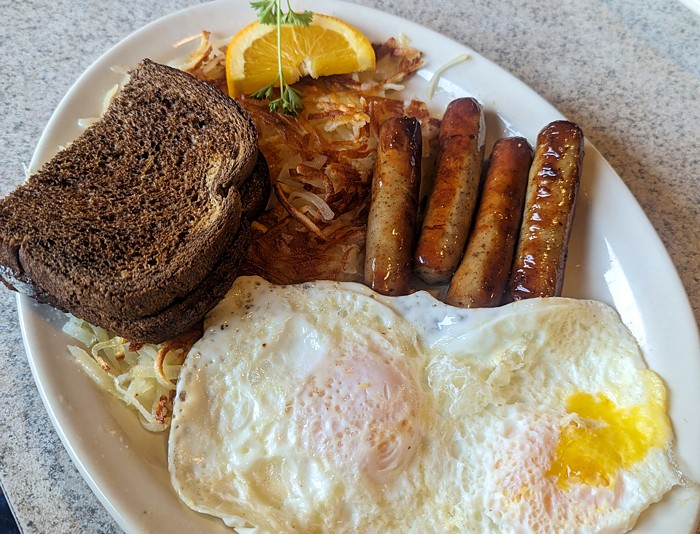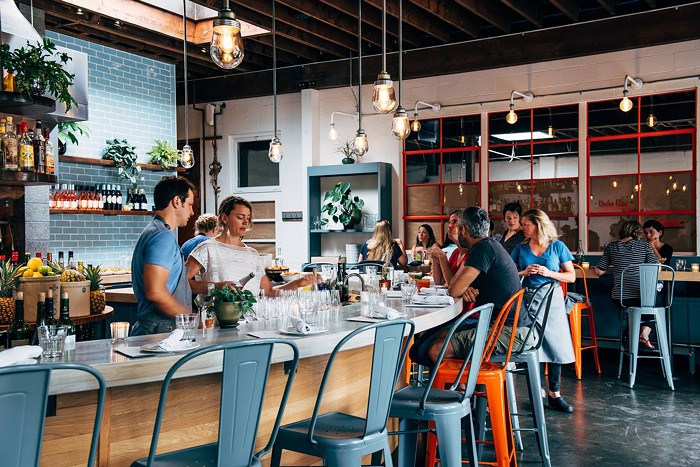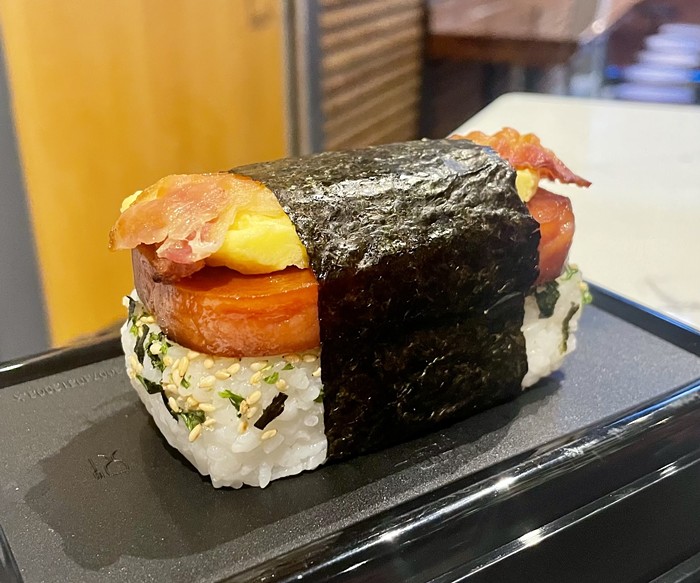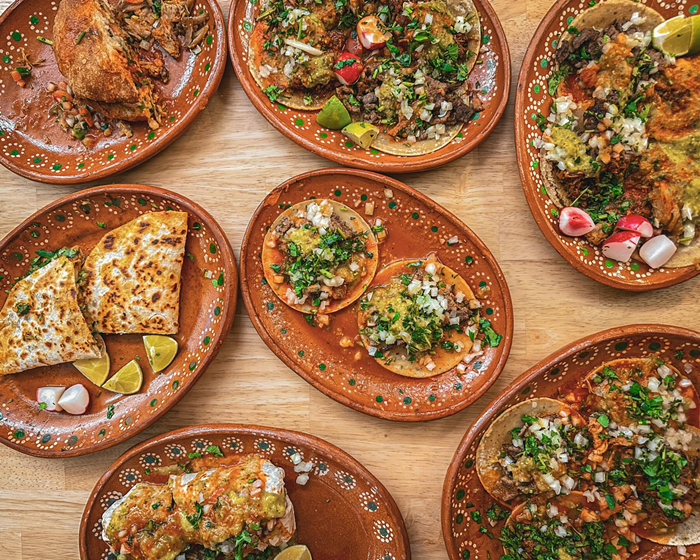It's true: Delancey is out in the middle of nowhere in the hinterlands of Ballard, and the dining room can be very loud, and the bar seating can be too hot, and sometimes the wait is two hours long, and they don't do takeout, and they don't take reservations (except for parties of six or more). It's also true: The pizza at Delancey is SO GOOD—made so right, with mindfulness and careful technique and beautiful ingredients and purity of heart—that nothing else matters.
Are you ready to embrace Delancey's oddities? It is where it is because Brandon Pettit and Molly Wizenberg (he's cooked at Boat Street Cafe, she writes the blog Orangette and wrote the book A Homemade Life) walked by the storefront on the way to a friend's house. They were looking for a space to realize their dream of bringing to Seattle wood-fired, thin-crust pizza that was orders of magnitude better than the others available here—pizza as good as the best pizza in the country, in the world—and this out-of the-way space was relatively cheap. They made Delancey on close to a shoestring. A friend of Wizenberg's who's starting a design firm did the plans for free; the mismatched cutlery and chairs are a thrifty necessity, not shabby-chic pretense, and the stripped-down aesthetic, ditto. (Of note: a row of simple reappropriated glass light fixtures in each room, cast-concrete bartop and tabletops, and Wizenberg's framed photos.) They know the dining room is loud, and they're sorry about that—they put up a rectangle of acoustic tile, and it's better than it was ("It used to be actually painful," Pettit says), but to do more involves hiring someone, which involves money, which they don't have. One thing they spent money on: rearranging the layout so no tables are right next to the bathroom. Another: the apple-wood-fired oven, which is why it's hot sitting at the bar. So it goes—you're not as hot as Pettit is, and he remains completely amiable with his bandanna around his forehead. (Ask him whatever you want, you'll see.) Of an evening, the front door might be left ajar for cool air, letting autumn leaves sneak in to lie picturesquely on the floor.
At the end of the bar the other night, an older gentleman in a plaid shirt folded a slice of pizza lengthwise and inserted it into his mouth. He was there alone—from out of town, he said with his mouth full. There didn't used to be any good pizza in Seattle, he said authoritatively, chewing more while signaling a waitperson for another glass of red wine. He was friendly enough, but he was there for a reason—probably largely having to do with crust.
Delancey uses top-drawer toppings: fresh mozzarella, local Padrón chilies, Zoe's pepperoni, foraged mushrooms, housemade fennel sausage (get the sausage!), and more. (They're experimenting with a super-garlicky white pizza with Taylor Shellfish Farms clams.) The red sauce is uncooked, made with canned San Marzano tomatoes from California, garlic, salt, sugar, and oregano, applied sparingly. (They don't believe in secret recipes; check www.orangette.blogspot.com.)
But the crust! Pettit made a series of pilgrimages, going to pizza places all over the country: Di Fara and others in New York, Ken's and Nostrana in Portland, Pizzeria Mozza in Los Angeles, Pizzeria Bianco in Phoenix ("Better than anything in New York or Italy," Pettit says). He held the dough in his hands, and he tasted it raw. The best dough, he found, was significantly wetter and saltier than the less-than-best: The wetness creates more steam that, in the 800-degree oven, makes more bubbles, while saltier is just better than less salty. He messed around with different water (no difference) and made his own pizza in different states. He got it just right: The outer edges have shattery, blackened bubbles; elsewhere, it's elastic, pulling like it's almost sentient; in the center, it's thinner than possible while still maintaining unquestionable structural integrity. Some of the pizzas come out oblong, which is adorable. By weight, they are not a bargain—from $10 to $18 for a roughly 12-inch pie—but then what truly good thing is? They are rich in their simplicity, especially the white pizzas, and eminently satisfying.
There are a few other things to eat at Delancey—a salad, appetizers, a chocolate-chip cookie with gray salt that people are crazy about (it's almost exactly David Leite's New York Times recipe, Pettit says, in case you want to make them at home). The wine list shows contemplation, doesn't discriminate about country, and has bottles priced at a bargain; beers are mostly local, all substantial. The soundtrack might be Some Girls by the Rolling Stones or a Neko Case album. Delancey knows what it's about.
As for the two-hour wait: They tried letting people call ahead, but they've been too busy to answer the phone, and then some people wouldn't show up. (They're too busy for takeout, too.) What they will do is take your phone number on-site, direct you to a nearby drink (at the bar Tarasco or the restaurant A Caprice Kitchen), then call you when your table's ready. Waits are shorter very early or on the later side (and on the later side, you might get in on free day-old cookies). In any case, it's worth it. ![]()



















